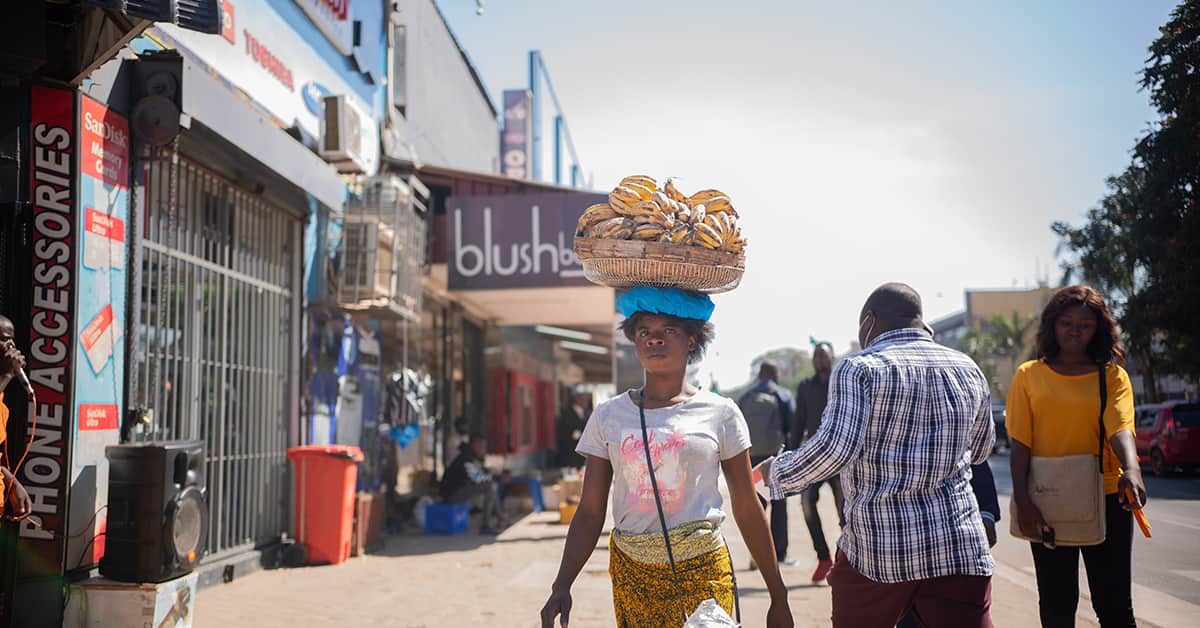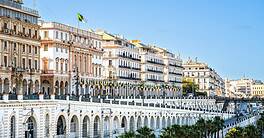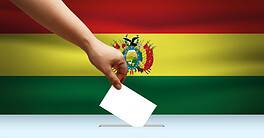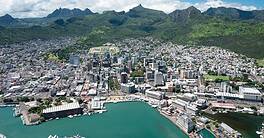Investors look to Zambia due to its positive economic atmosphere.

|
VITAL STATISTICS |
|---|
|
Location: South-Central Africa |
|
Neighbors: Angola, Namibia, Botswana, Zimbabwe, Mozambique, Malawi, Tanzania and the Democratic Republic of the Congo (DRC) |
|
Capital city: Lusaka |
|
Population (2022): 20 million |
|
Official language: English |
|
GDP per capita (2021): $1,120.63 |
|
GDP growth (2021): 4.6% |
|
Inflation (2021): 22% (est.) |
|
Unemployment rate: 13% |
|
Currency: Kwacha |
|
Investment promotion agency: : Zambia Development Agency |
|
Base interest rate: 8.45% |
|
Corruption Perceptions Index rank (2021): 117/180 |
|
Investment incentives available: No import duty; accelerated depreciation for capital equipment; signatory to the WTO Trade Facilitation Agreement; duty-free and quota-free market access to EU and US; wide range of allowances, exemptions and concessions to companies; for certain investors in Multi-Facility Economic Zones: no corporate tax for first five years, then on 50% of profits through year eight and 75% through year 10, five-year customs duties exemption on imported machinery and equipment; insurance for exporters on trade deals and political risk insurance for trade transactions |
|
Security risk: Expected social discontent as economy worsens; assaults and petty crime, including carjacking; landmines in areas bordering Angola, the DRC and Mozambique; accidents on poorly maintained roads; water supply shortages and power outages; illegal child labor, including human trafficking |
|
PROS |
|---|
|
Young population |
|
Fertile soil |
|
Mineral wealth |
|
Significant hydroelectric power potential |
|
Administration committed to implementing robust infrastructure development for roads and bridges |
|
CONS |
|---|
|
Landlocked |
|
Boundary disputes with neighbors |
|
Low investment in education, severe localized food insecurity |
|
Sources: Bank of Zambia, CIA World Factbook, Coface, Fitch Solutions, Government of Canada Global Travel Advisory, International Monetary Fund, Reuters, Moody’s Investors Service, Transparency International, US State Department, World Bank, World Population Review, Zambia Statistics Agency |
|
For more information, check out Global Finance‘s Zambia Economic Report data page. |
Zambia is attracting international investors’ attention owing to friendly economic policies, a stable political framework and a top-performing currency driving up business confidence.
Just over one year into the presidency of Hakainde Hichilema, Zambia is now charting a path toward stability and economic growth, says Edward Mumba, a driver with the Ulendo Taxi ride-hailing company, during a ride in Lusaka, the capital.
Hichilema replaced Edgar Lungu as president of Zambia in August 2021.
“We are starting to see some form of stability in prices and in the exchange rate, and this is encouraging. Who would have thought the kwacha [Zambia’s currency] would be stronger than the South African rand,” says Mumba.
Hichilema is championing anti-corruption measures and is doing away with subsidies, breathing fresh confidence into the economy, say financial sector executives and economic analysts.
“We have seen an improvement in investor confidence in the past year, driven by favorable investor-friendly policies by the new government coupled with the International Monetary Fund [IMF] approving the Extended Credit Facility [ECF] for Zambia,” Kona Nkanza, vice president for structured investment product solutions at the Africa Finance Corporation (AFC), tells Global Finance.
In August, the IMF advanced Zambia a $1.3 billion, 38-month ECF arrangement to address the “years of economic mismanagement” that had resulted in “inefficient public investment” for the country, the organization noted in a September statement.
Additionally, Zambia has sunk into “debt distress,” having defaulted in late 2020 on repayment of $42.5 million worth of Eurobond coupons. The country now “needs a deep and comprehensive debt treatment to place public debt on a sustainable path,” added the IMF.
The $1.3 billion IMF loan is earmarked to hedge the economy against fallout from headwinds, such as the knock-on effects of its debt default, by advancing economic policy reforms, restoring debt sustainability, creating fiscal space for much-needed social spending, and strengthening economic governance.
In October, the World Bank followed up the IMF’s credit facility with a $275 million package to be used to restore fiscal and debt sustainability while promoting growth led by the private sector.
Copper Still Shines
Zambia’s ability to unlock financing from international financiers has boosted investor sentiment in the country. This boost in confidence is “encouraging investment activity” across the economy, explains AFC’s Nkanza.
Most firms in Zambia have been reporting increased investment in 2022, according to the Bank of Zambia’s Quarterly Survey of Business Opinions and Expectations for the second quarter of this year.
Reuters reports that mining and metals processing group Sibanye-Stillwater CEO Neal Froneman is excited about the investment opportunities in Zambia’s Mopani Copper Mines.Meanwhile, Canadian mining interests First Quantum Minerals and Barrick Gold are raising their investments in their Zambian operations, while Anglo American will resume its copper exploration within the country.
Increased investments are helping Zambia notch up its foreign direct investment (FDI) inflows, which amounted to $269.5 million for the second quarter—more than the $234 million inflow for all of 2020—according to macroeconomic data provider CEIC.
Although still behind regional powerhouses South Africa and oil-rich Angola, Zambia’s FDI performance is currently above regional peers Botswana, Rwanda and Malawi, Nkanza points out.
The Zambian kwacha has appreciated 33% in the 12 months that ended in June 2022, according to IMF data.
Ikenga Kalu, foreign exchange (FX) broker at currency-trading platform provider AZA Finance, says that this has mainly been “on account of the government’s continued intervention in the FX market and positive market sentiment regarding the country’s debt restructuring program.”
“Large portfolio inflows from foreign investors into local currency government debt have supported currency demand as well as the government’s access to local currency financing,” Moody’s Investors Service wrote in an October report on Zambia.
Even development funders have been stepping up their investments in the country. The African Development Fund has set aside a $14.4 million loan to boost food security in Zambia. India also has stepped up its investments in the African country by committing $5 billion in investments targeting Zambia’s health, agriculture and infrastructure-development sectors.
Fitch Solutions ranks Zambia in position 18 out of 49 on its proprietary Operational Risk Index for sub-Saharan Africa, “fairing relatively well” for the country.
“Our core view is that the current government’s efforts to attract investment in the mining sector will pay off in the coming years,” says Gianmarco Capati, sub-Saharan Africa country risk analyst for Fitch Solutions.
This calls for Zambia to diversify its economy by attracting investment in other sectors to hedge against commodity price busts.
Growing Agriculture
According to AZA Finance’s Kalu, a temperate climate and abundant water resources create significant potential for investment diversification into large-scale food production and export.
A move away from subsidies “will render the agricultural landscape in Zambia more competitive” and presents further opportunities for investors, he says.
“The government is seeking to attract investment in higher value-added agriculture and manufacturing, but these efforts will likely take time to translate into meaningful diversification away from copper. We believe mining will remain the mainstay of the economy in the coming years,” explains Fitch Solutions’ Capati.
Furthermore, “renewable energy and climate change readiness” also stand to be exploited in terms of investment, according to Irmgard Erasmus, a senior financial economist at Oxford Economics Africa.
“The overhaul of investment attractiveness in Zambia amplifies the opportunities within the space of solar, wind, geothermal and other green energy sources,” he says.
Zambia, however, must restructure its debt quickly. It has some coupons due in the next two years, and investors will watch how this pans out.
Under Hichilema, there has been transparency; and it appears the country is making headway in restructuring its international debt, according to analyts.
“Restoring macroeconomic stability and debt sustainability is necessary for attracting private sector capital inflows, investment and growth,” said World Bank Group President David Malpass, in an October press statement announcing the bank’s $275 million aid package.
“Faster growth and private sector investment depend on prompt completion of debt reduction,” said Malpass.
Moody’s affirms the Zambian government’s foreign-currency and local-currency long-term issuer ratings as Ca stable, noting that its “macro outlook has improved in recent quarters.”
With real GDP growth recovering to 4.6% in 2021, the ratings agency projects Zambia’s economic growth “to decelerate to 3% in 2022, partially due to a slowdown in mining output after heavy rainfall in the north of Zambia, where most of the mining industry is located, led to difficult operating conditions and lower production.”
Moody’s cautions that “continuing appetite from nonresident investors in Zambia’s local currency debt is not assured as global financing conditions tighten, with potential implications for the value of the kwacha and, by extension, inflation.”
Other headwinds include an uncertain global economic outlook as well as continued disruptions to global supply chains due to the Russian war in Ukraine. Erasmus foresees copper prices enduring strain over the next six months amid elevated global stagflation concerns.
“Uncertainty surrounding China’s near-term growth prospects amid flare-ups in coronavirus cases cast a further downside,” she says. “Aggressive monetary policy tightening by the Fed and [the European Central Bank] is weighing on global funding conditions, with a pass-through effect to FDI decisions, which means Zambia stands to benefit from a diversification of its export base.”



